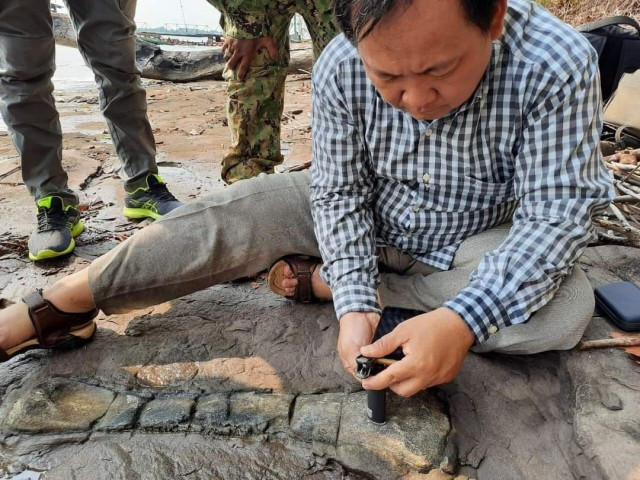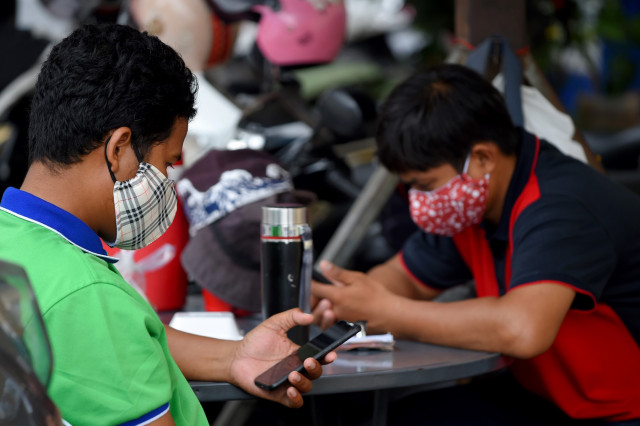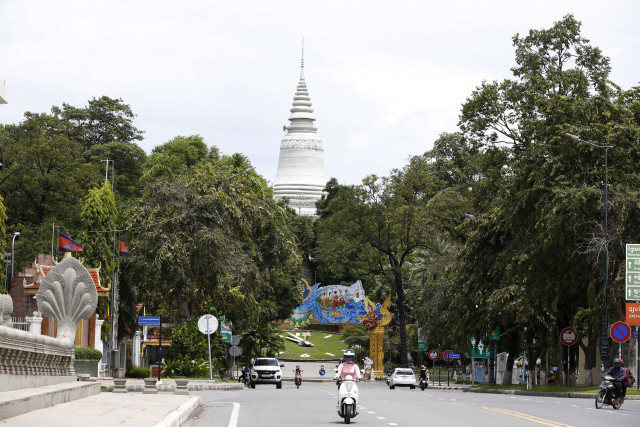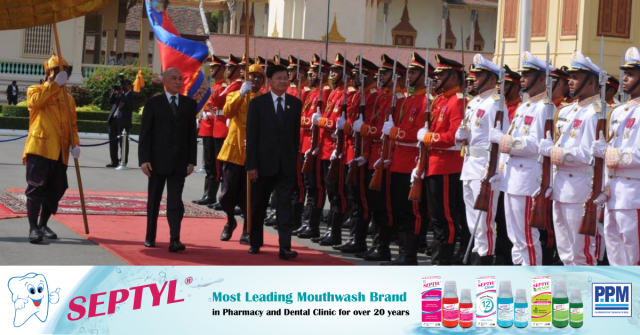Opinion: Healthier Canals Mean Healthier Neighbourhoods

- By Piseth KETH
- November 21, 2024 3:00 PM
When the Boeung Trabek sewage canal was first designed, it was known as the "canal of a thousand fragrances". The French designed the 20th-century infrastructure as a vast water system to allow the marshy floodplain on which Phnom Penh sits to drain into the surrounding lakes.
The current version of the sewage canal is much less illustrious and known by the more prosaic nickname 'loo teuk sa-ouy,' "smelly water canal", or " shit canal."
The Boeung Trabek waterway flows slowly south, sometimes covered in concrete and open to the air as a dark brown sludge. In the rainy season, the toxic cargo of the canal is known to overflow the embankments and flood the surrounding streets. Residents have raised the alarm over the health issues this waterway, and others, pose.
Nevertheless, innovative, low-cost, decentralised approaches to wastewater treatment have the potential to make a big difference for this sewage canal and the surrounding neighbourhoods.
Millions of dollars in foreign aid have flowed in at various points to maintain or update the canal and other parts of the city's sewage system. At the same time, local spending on wastewater management remains low. As little as "10% of the income received by the PPWSA from water bills is allocated to the sewerage system and wastewater treatment." Furthermore, the city lacks a sewerage master plan and comprehensive wastewater strategy.
Initiatives that can potentially rehabilitate this canal are not just a matter of mitigating the health and flooding problems these waterways pose. Projects focusing on Phnom Penh's canals could also serve as opportunities to turn polluted parts of the city into vibrant public spaces that local communities badly need.
Boeung Trabek needs a decentralised water treatment plan
Alongside the Boeung Trabek sewage canal, inhabitants and properties have drastically increased, and the surrounding neighbourhoods have become increasingly densely populated. The water infrastructure in the Boeung Trabek neighbourhood cannot keep up with this level of population density. To improve the current condition of the canal and revitalise the surrounding area, the city of Phnom Penh must install filtration tanks. This is the best way to ensure that local households' black and grey water is treated before flowing into the canal.
Filtration tanks will reduce the level of water pollution that travels straight from households to the canal, which will, in turn, create direct benefits for the general health of the neighbourhood and leverage increased economic opportunities for those who own the shophouse alongside the waterway.
While many different types of water filtration infrastructure exist, one strategy fits the Boeung Trabek sewage canal's needs exceptionally well. This system, called DEWATS, is a low-cost, bio-based, decentralised wastewater treatment approach that is particularly well-suited to use in densely populated urban communities in developing countries. The passive design of this system uses physical and biological treatment mechanisms such as sedimentation, floatation, and aerobic and anaerobic treatment to treat both household and industrial wastewater sources. Crucially, DEWATS is designed to be low-maintenance, to use local materials, and to meet environmental laws and regulations.
In a DEWATS system, water flows through a series of tanks that work in combination. For example, when water flows through a DEWATS Settler tank, scum floats to the surface, and waste is sedimented at the bottom. With the proper infrastructure in place, the DEWATS system could generate usable renewable energy in biogas, which residents can use for cooking and lighting.
Figure (1)
Figure (2)
Figure (1)&(2) : source from DEWATS
It should be noted that as many as 62 DEWATS systems are already in use in other contexts in Cambodia. DEWATS have been installed in Cambodia to provide water filtration primarily to school sanitary facilities and hospitals.
Aside from water filtration, if Boeung Trabek aims to transform its waterways, authorities must invest more in upgrading critical pump stations. These pump stations manage the rainwater circulation in that area to keep canal water from flooding the roadside during the rainy season. While some restoration efforts are planned, greater attention must be paid to these stations to maintain the water flow.
Likewise, any project to rehabilitate the sewage canals would only be helpful with a concerted effort to maintain and protect the remaining lakes. These lakes, or what is left of them, are necessary for resilient and sustainable Phnom Penh waterways.
Revitalising the canal could create a sustainable public space
If we transform the canal into a green, pleasant public space, it could become a place for the residents to congregate and for children to play. The positive impact this would have on the neighbourhood's livability and its residents' well-being cannot be overstated.
Siem Reap has already begun to think creatively about the ways canals of this sort could be transformed into green public spaces. The project in Siem Reap to transform a former sewer into a park is relatively small. The sewer canal is 635 metres long and between five and eight metres wide. However, it shows how even a tiny space can make a massive difference for surrounding communities and create potential economic dividends.
“This sewer canal in Siem Reap used to stink and negatively affect the environment, but now it will be converted into a new tourism spot to attract not only local visitors but also international tourists who come to the area to visit Angkor Park,” Ly Raksmey, undersecretary of state at the Ministry of Land Management, Urban Planning and Construction told Khmer Times.
What if Boeung Trabek could adopt a similar approach to rejuvenate the space? Markets, schools, and some local art spaces already surround the site. Phnom Penh could transform this canal into a vibrant open area with a rehabilitation project.
However, to revitalise local areas, it is crucial to have local communities’s involvement. When households are involved in the reinvention of this place, it contributes to their sense of belonging and ownership of the space around the canal, which increases the likelihood that they will feel responsible for their efforts to care for the space.
Transforming this sewage canal would transform the lives of locals around the area. This is about more than just a waterway. It is about the health, safety, and well-being of whole neighbourhoods. Implementing decentralised water treatment plants, refurbishing the canal space, upgrading the pump station, and protecting what remains of the lake will allow people to reclaim the space for all benefits.
Piseth Keth is a junior research fellow at Future Forum














